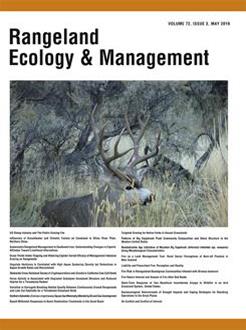Aspen is a foundation species that provides vital habitat for hundreds of plant and animal species. However, changing ungulate herbivory regimes may be altering recruitment success and resilience of aspen forests. The objective of this observational study was to quantify the impacts of ungulate herbivory on aspen recruitment potential. We sampled 36 aspen dominant stands on the Fishlake National Forest in Utah for browse of apical meristems, suckering density (b 180 cm in height), and recruitment density (≥ 180 cm). Our analysis indicated that for each 10% of apical meristems browsed, annual vertical and radial growth rates and recruitment density were reduced by 1.2 cm, 0.02 mm, and 17 ha-1, respectively. In contrast, aspen suckering density increased by 1 230 suckers ha-1, with each 10% browse of apical meristems. This suggests that ungulates contribute to aspen suckers persisting in the understory for longer periods and may alter recruitment success of aspen stands. Aspen that were under high ungulate browse pressure were associated with lower growth rates and persisted for twice as long in the understory. For example, a 5-yr-old sucker was predicted to be 115 cm without browse of apical meristems and 60 cm with 100% browse of apical meristems. Further, aspens of the same height with 100% browse of apical meristems were nearly 4 yr older on average than aspens with no evidence of browse of apical meristems. Approximately 34% of aspen suckers had persisted in the understory < 100 cm for ≥ 6 yr, and 7% of suckers had persisted in the understory for ≥ 10 yr. Our results suggest that high rates of meristem removal are correlated with increased aspen suckering yet reduced aspen growth and recruitment.
How to translate text using browser tools
1 May 2019
Ungulate Herbivory Is Correlated with High Aspen Suckering Density but Reductions in Aspen Growth Rates and Recruitment
Aaron C. Rhodes,
Cecily Fitch,
Samuel B. St. Clair
ACCESS THE FULL ARTICLE

Rangeland Ecology and Management
Vol. 72 • No. 3
May 2019
Vol. 72 • No. 3
May 2019
Bos taurus
Cervus elaphus
herbivory
Odocoileus hemionus
Populus tremuloides




